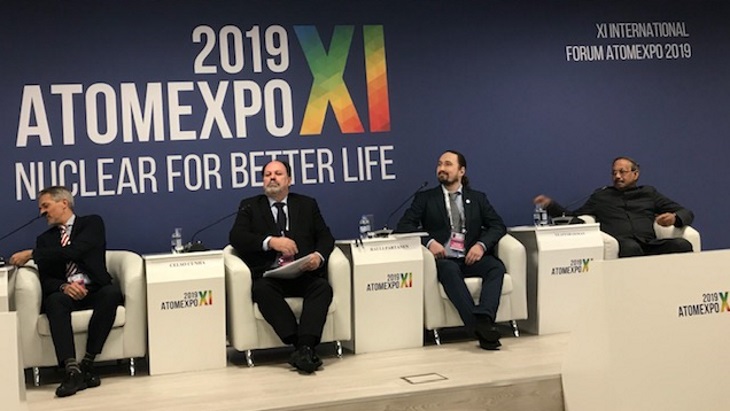In this context, 'system' means that system costs are calculated, externalities - such as particulates from burning coal - are included, and the quality of energy services provided is important, he said.
"An energy system includes all energy use and so not just electricity, which accounts for just over one-fifth, but also space heating, hot water and industrial process heat, which is about half of total energy use. In Europe, this totals about 6000 TWh per year. "The system also needs to include transportation fuels for those parts of the transportation system we fail to electrify," he said.
"Most of our energy systems today are hybrid because they have multiple energy systems and they also provide various energy services, but I think that we could focus 'hydbridisation' a bit more to use a single energy source to do multiple services, like combined heat and power and load following services for grid and storage and flexibility."
Challenges
Clean hybrid energy systems face three main challenges, he said. The first of these is emissions, which would need to be less than 50g CO2/kWh, or less than 20g for heat. The lifecycle emissions from electricity generation from coal, gas and biomass with carbon, capture and storage is about 820g CO2/kWh, 490g CO2/kWh and 230g CO2/kWh, respectively. For large-scale solar and hydro it is 48g CO2/kWh and 24g CO2/kWh. Offshore wind and nuclear are equal at 12 g CO2/kWh.
The second challenge, pollution and health, requires limited particulate matter and pollution; that the energy generation is safe for public health, he said.
Fatalities by energy source per TWh produced are about 224 for coal, 52 for oil, 50 for biofuels, 50 for peat and 20 for natural gas. For hydro, wind and rooftop solar, the number of deaths is 1, 0.15 and 0.1. For nuclear, it is 0.04.
The third challenge, environmental footprint, acknowledges the environment, biodiversity and ecosystems, he said. Here, the power density of the energy source is important. Of renewable energy sources, including hydropower, the highest density can be achieved through solar power, at up to 10 W/sqm. That contrasts with nuclear, which can achieve up to 1000 W/sqm.
For these challenges, therefore, nuclear power is "the only one that ticks all the boxes", he said.
Issues
The main issues to be addressed are physical, technological, economic and social.
The first of these concerns meeting demand with increasingly intermittent energy sources.
"Humans moved from renewable flows to fossil fuels for a reason," he said, since "on-demand energy dramatically increases productivity and quality of life". But "shifting demand in time and space has an exponentially increasing (opportunity) cost".
Nuclear is the most cost-effective way to decarbonise the system, he said.
The technological issue involves, for example, storing hydropower at grid scale when this resource has already been tapped in most of the Western World. "There is no guarantee that cheap grid-scale battery chemistry even exists," he said.
The economic issue is fourfold. As intermittent production increases, then demand management costs increase, the value of intermittent energy decreases and baseload energy costs increase. Secondly, these costs are not included, nor are they transparent, owing to subsidies, tax credits, tariffs, and portfolio standards, he said.
Thirdly, current market design does not value reliability, but "actually values things that destroy it". So, finally, the question is to re-design markets so that they more fairly value each energy source, he said.
The social question requires that climate mitigation efforts are based on equality and therefore who pays for it.
"Many well-meaning energy policies, renewable energy tariffs and subsidies have been inefficient and even counter-productive; they have been regressive, with the poor paying the rich; and they have eroded public and political willingness to mitigate climate change," he said. "There is the risk of eroding the public's will to mitigate climate change."
The problem is that most energy scenarios "manually limit" the share of nuclear power in their energy system models, namely by not building new plant, he said. "But if we want a clean, reliable and affordable energy system as fast as possible, then it's clear that nuclear needs to be a big part of it."
Think Atom produced a report earlier this month that studies the demand, supply and emissions reduction potential of heating Finland with small nuclear reactors.






_63865.jpg)
_18570.jpg)
_16159.jpg)





